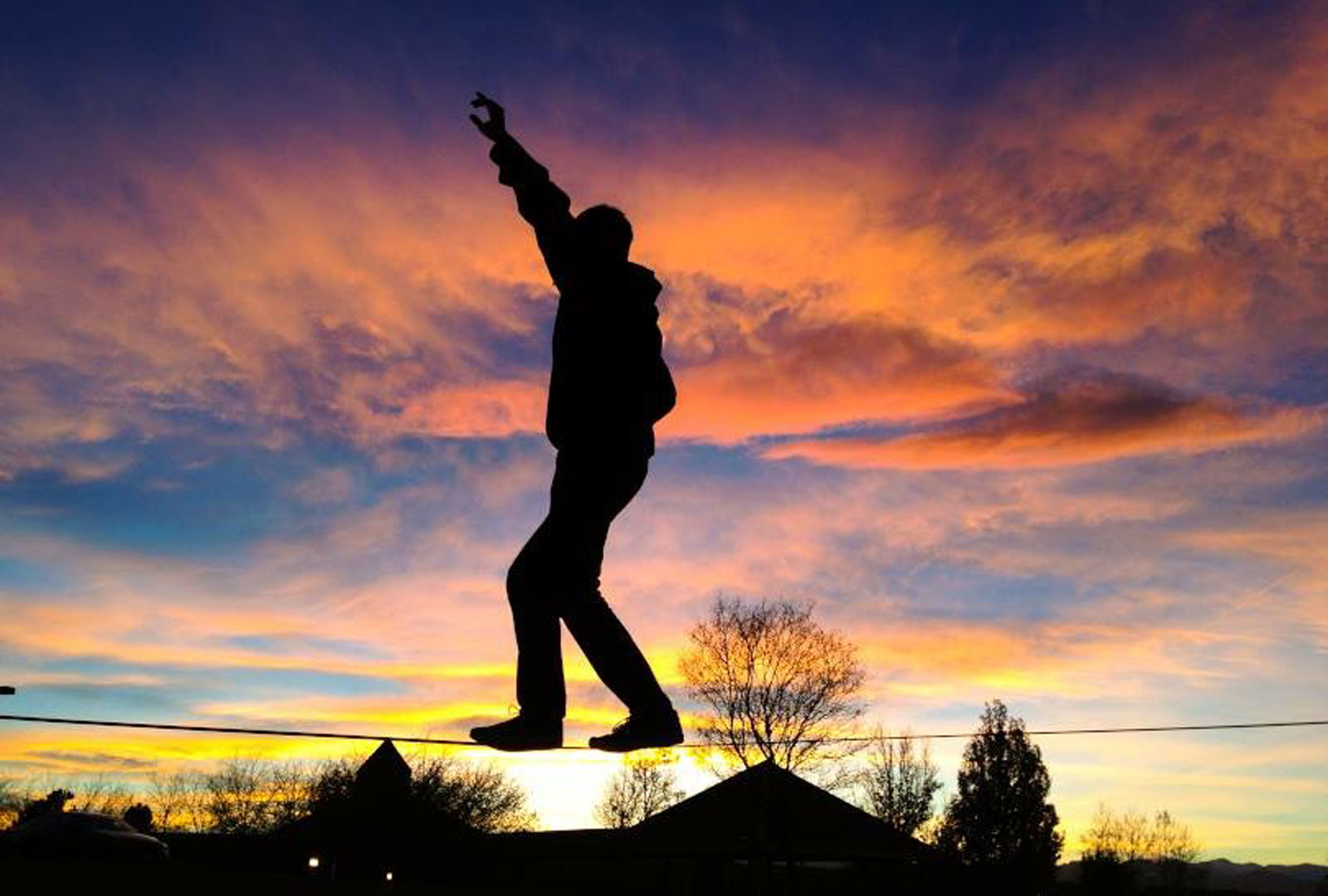The Local newsletter is your free, daily guide to life in Colorado. For locals, by locals.
After several years of negotiations between Boulder officials and the slacklining community, a new City Manager’s Rule now permits the outdoor activity in eight city parks, using the support of designated trees.
Slacklining, or traversing a piece of webbing fixed between two trees, was previously not allowed under Boulder’s “Protection of Trees and Plants” City Code 6-6-6(c), which prohibits attachments or installations on any city-owned tree. Jeff Haley, planning, design and community engagement manager for Boulder Parks and Recreation, says slacklining itself was never outright illegal. “It basically got lumped into this general rule meant to protect trees—what we consider our urban forest.”

Despite the old rule—yet in tune with Boulder’s pioneering slackline history, which dates back as early as the 1940s—slackliners could never resist taking advantage of the city’s abundant green spaces. Until the past decade, when the sport garnered more mainstream popularity, the threat that abrasive webbing posed to tree bark was fairly low. But starting in the late 2000s, slacklines began popping up between Boulder’s trees before the city could reconsider or adapt its policies. All of a sudden, it seemed slacklining—a refreshing lunch break activity, cheap after-school hang out, or emergency rescue tactic in the case of the slackliner who saved a man dangling from an A-Basin chairlift in January—was everywhere.
On a sunny, but quiet day in July 2015, Tyler Shalvarjian, then a junior at University of Colorado Boulder, met some friends at one of his favorite places in the city, Martin Park. Surprisingly, the multi-use greenspace in South Boulder was practically empty that day. The group tightened a slackline between two trees about 500 feet apart, took turns stepping up, balancing across, and cheering each other on. Mid-balancing act, an officer appeared and demanded the slackline be removed, evoking City Code 6-6-6(c). Shalvarjian stepped up and took the blame, along with a $250 citation.
“That’s when I jumped into the legalization process,” Shalvarjian says. “I spent the last two years chatting with city officials, going back and forth analyzing parks and trees to see [which could best] support slacklining.”
At that point, slacklining negotiations already had a strong foundation. Ken Wagers, a longtime slackliner since the ’80s, had helped start the conversation over four years ago. It didn’t seem fair to punish someone for being outdoors, active, and social, when all parties involved just as concerned with keeping trees and people safe. “Last year we finally pulled together all the right people. We sat down with the [city’s] chief forester, Jeff Haley, their legal staff, and we talked. They were really open to what we had to say.”
The slackliners presented a policy draft to the city, using examples from other places that do allow slacklining, like Jackson Hole, Wyoming and CU Boulder, which sanctioned slacklining on campus in 2014. When it came time for the city to make a decision, Haley says, “It was a very positive, very collaborative process. We used a lot of the same language as [CU Boulder’s campus], looking for consistency throughout the city.”
The new ruling outlines eight parks approved for slacklining (and an interactive map identifying which trees are permissible to use), how to properly protect trees (with carpet squares or cloth pads), how high the lines are allowed to extend off the ground (four feet at the midpoint), and other measures to protect participants and spectators.
“It was an excellent opportunity the youth—teenagers to university students who aren’t on playgrounds, but don’t necessarily like team sports,” Haley says. “It’s a healthy sport to get people outside. It’s social, and it builds community.”
Denver has yet to conform to slacklining’s growing popularity. The sport is still isn’t allowed. “I slacklined once in Denver,” Shalvarjian says. “And an officer came and told me it was illegal, but thankfully he didn’t give me a ticket.”








